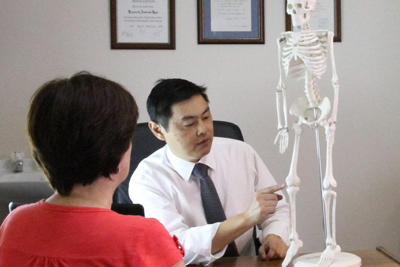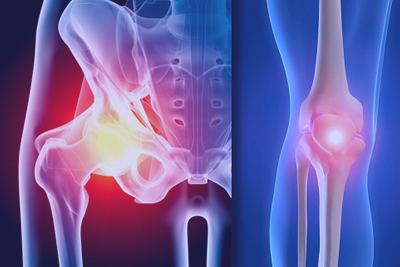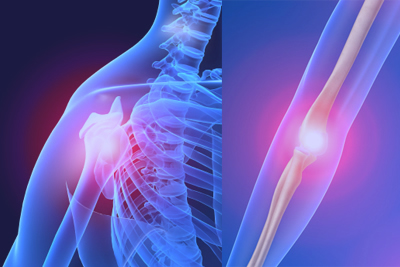(Surgical Modulation of Growth)
In Children epiphyseodesis is considered the treatment of choice for the surgical correction of leg length discrepancies between 2-5cm or angular deformity (hemiepiphyseodesis). The technique has a low morbidity and complication rate. It is a compensatory procedure which slows growth of the normal leg. Nevertheless it improves appearance, gait and function. Correction of angular malalignment diminishes the risk of secondary joint degeneration.
Epiphyseodesis of the lower femur reduces growth of the lower limb by 38% (1cm/yr). The proximal tibia contributes 27% (.6cm/yr). Angular correction occurs at the rate of 7 degrees / yr for the distal femur and 5 degrees / yr for the proximal tibia.
One must keep in mind that the procedure is only beneficial if the child is actively growing. It is less effective in conditions where there is general growth retardation. Erring on the side of under correction is preferable as slight discrepancies are well tolerated. The aim should be for equal knee heights and a horizontal joint line. Timing of surgery is critical and based on the predicted angular or length discrepancy at maturity.
Permanent methods of epiphyseodesis include the traditional open technique (Phemister 1933) in which a bone block is removed allowing curettage of the physis under direct vision. The bone block is subsequently replaced in a reversed position. With the advent of image intensification, percutaneous drilling techniques have been developed. This requires minimal surgical exposure and is associated with a more rapid rehabilitation. The use of staples to tether the physis was heralded by Blount and Clarke in 1949. In theory, timing was felt to be less critical as growth could recommence after staple removal. In reality, the resumption of growth was unpredictable and rebound growth was possible after hemiepiphyseodesis leading to deformity recurrence.
Percutaneous epiphyseodesis using transphyseal screws under II control is becoming popular due to the ease of operative technique and rapid rehabilitation. Surgery is performed away from the joint and the morbidity is very low. The method is also potentially reversible. Cancellous screws are utilised with threads crossing the physis at the junction of inner and outer quarters.





 Dr. Leonard kuo
Dr. Leonard kuo